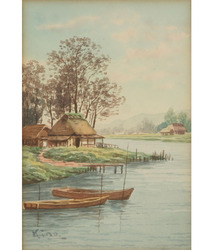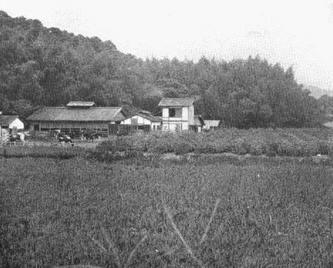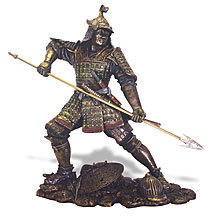Early Clan Organization
Clans are families of people related by blood or marriage. Land was fought over as it was the main source of wealth as little of it could be cultivated. For centuries, society was organized by a few powerful nobles leading large, influential clans. They were the only Japanese with a family name and an individual name. Most common people were farmers who lived in villages, farming and fishing. Some had other skills as well, including the ability to make pottery or to weave cloth. Other people were enslaved by nobles to cook, clean, or take care of the house.
Shinto, the traditional Japanese religion, strongly unified the people, as the divine spirits and ancestors were honored by everyone (nobles, workers, slaves).
In the 400s, a clan from Central Japan, the Yamato clan, became the most powerful. Some of this family's members were the first emperors. Tradition says that the members were the sun goddess descendants. For this reason, "human" emperors were treated as gods. During their "rules", military leaders had all the real power. Rivals fought for this power.
The system looked stable because rulers hardly changed. Until child successors were old enough, regents or official rulers would take charge. One important regent was Prince Shotoku.
Shinto, the traditional Japanese religion, strongly unified the people, as the divine spirits and ancestors were honored by everyone (nobles, workers, slaves).
In the 400s, a clan from Central Japan, the Yamato clan, became the most powerful. Some of this family's members were the first emperors. Tradition says that the members were the sun goddess descendants. For this reason, "human" emperors were treated as gods. During their "rules", military leaders had all the real power. Rivals fought for this power.
The system looked stable because rulers hardly changed. Until child successors were old enough, regents or official rulers would take charge. One important regent was Prince Shotoku.




